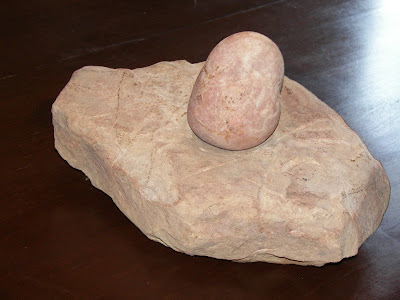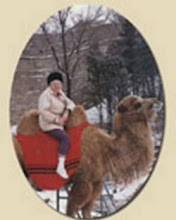
 Our small farm consists of 10 acres in what used to be Cherokee land.
Our small farm consists of 10 acres in what used to be Cherokee land.Over the many years of plowing that has been done on our land,
most of the arrowheads and other artifacts have been scavenged.
When we began building our home in 2000, we found these two
'Indian rocks'.
We assume that they were used as a mortar and pestle.
We found one other pestle, but it wasn't as well shaped as this one.
We have yet to find the mortar, but we keep searching.
These finds keep me dreaming of days gone by and
legends of the people who came before us.




2 comments:
uYou're right, rocks like those were used as mortars and pestles. Here in New Mexico we call the pestle a "mano" (Spanish for hand) and the mortar is called the "metate," pronounced meh-TAH-tay. Sometimes a pestle was used without a portable mortar. In the mountainous areas of New Mexico (and I'm sure other places) you can sometimes find depressions of different sizes and depths in the rock outcroppings. These depressions are much smoother than the surrounding rock, so you can tell they've been used for grinding. It was probably much easier for nomadic or semi-nomadic people to carry just the pestle.
I didn't realize that the pestle was called a metate. Our favorite Mexican restaurant is called El Metate. The scales make it all to obvious that we eat there regularly!
Ruth Ann
http://www.raggbaggs.blogspot.com
http://www.r2swanger.etsy.com
Post a Comment